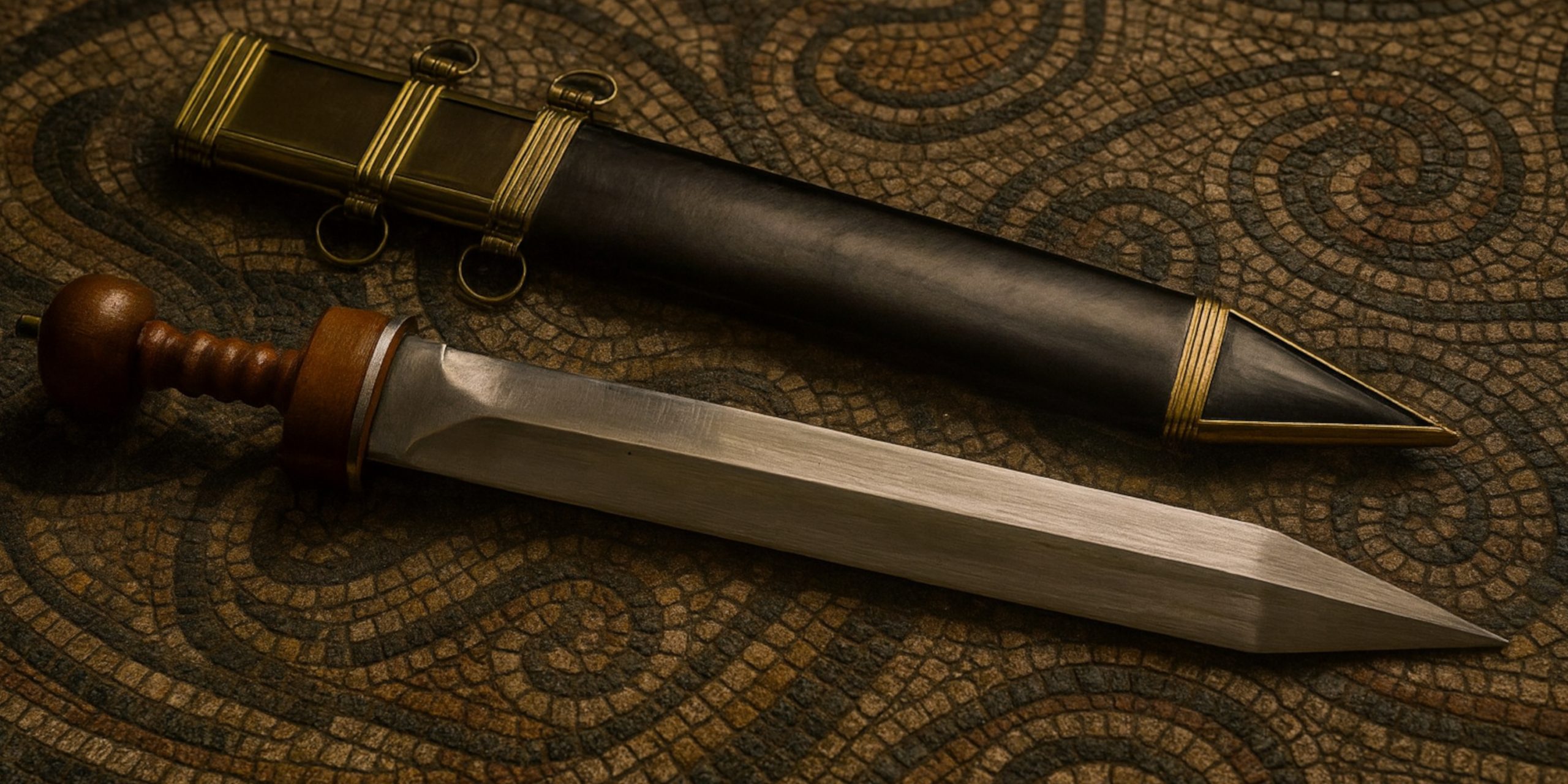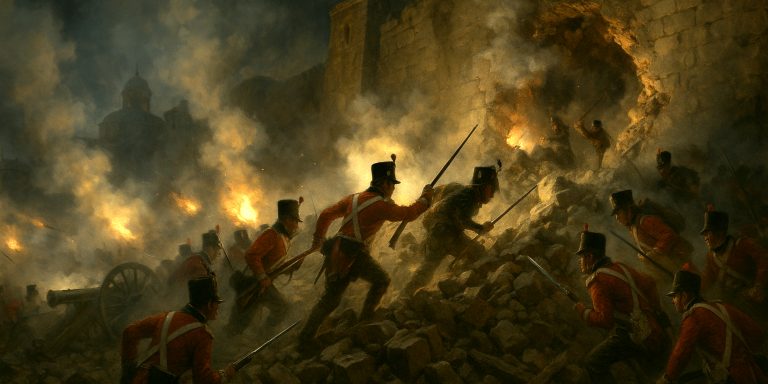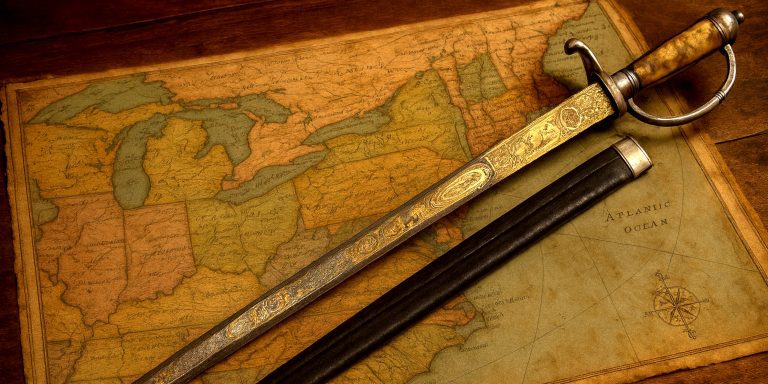
The Pompeii-type gladius represents the final and most refined evolution of the Roman short sword. Named after the examples discovered in the ruins of Pompeii, it became standard issue for legionaries in the 1st century AD and remained in service until the shift to longer spathae in the 2nd and 3rd centuries. Its straight, parallel-edged blade made it ideal for both thrusting and cutting, reflecting changes in Roman tactics and battlefield conditions.
Specifications
| Feature | Description |
|---|---|
| Blade Length | 42 to 50 cm (approx. 16.5 to 20 inches) |
| Overall Length | 60 to 70 cm (approx. 24 to 28 inches) |
| Blade Width | 4.5 to 6 cm |
| Weight | 700 to 1000 grams |
| Blade Type | Straight, double-edged, parallel sides |
| Tip Style | Short point, typically triangular |
| Tang | Full tang construction |
| Grip | Wood or bone, with ridges for grip |
| Guard | Small, rounded or rectangular |
| Pommel | Often spherical or flattened |
History and Evolution
The Pompeii-type gladius emerged during the late Augustan or early Tiberian period, gradually replacing earlier variants such as the Mainz and Fulham types. Unlike its predecessors, which had wasp-waisted blades and long points, the Pompeii gladius had parallel edges and a shortened tip, suggesting a more versatile function in both cutting and thrusting.
Key developments:
- Shift from shock-and-thrust to more adaptable close-quarters fighting.
- Standardisation of equipment across legions.
- Influences from Iberian and Celtic swordsmithing traditions persisted but were increasingly Romanised in form and construction.
The sword remained in widespread use until around the mid-2nd century AD, when the Roman military began transitioning to the longer spatha, especially among cavalry and frontier troops.
Advantages and Disadvantages
Advantages
- Efficient for both slashing and thrusting due to straight edges.
- Short length suited to tight formations such as the testudo.
- Easier to mass-produce and maintain compared to earlier curved designs.
Disadvantages
- Reduced penetration potential compared to the long-tipped Mainz type.
- Limited reach against longer barbarian swords during late imperial campaigns.
- Less intimidating in appearance than earlier variants.
Comparison with Similar Weapons
| Feature | Pompeii Type | Mainz Type | Fulham Type |
|---|---|---|---|
| Blade Shape | Parallel-edged | Wasp-waisted | Straight-edged |
| Tip | Short, triangular | Long, tapering | Tapered |
| Typical Use Period | 1st–2nd c. AD | Late 1st c. BC–early 1st c. AD | Early 1st c. AD |
| Strength | Balanced use | Superior thrusting | Transitional design |
| Weakness | Less reach | Heavier, slower | Lacked standardisation |
Legacy
The Pompeii-type gladius became the iconic weapon of the disciplined Roman legionary. Its practical design reflected the evolution of Roman military doctrine toward more flexible combat scenarios. The sword’s prominence in surviving artwork and statuary, including reliefs like those on Trajan’s Column, speaks to its widespread and symbolic use.
While later replaced by the spatha, the gladius Pompeii represents the high point of Roman short sword design, blending function, simplicity, and lethality in one compact form.
Where to See Pompeii-Type Gladii
You can view original examples of the Pompeii gladius in several museums across Europe:
- Naples National Archaeological Museum (Italy) – Items excavated directly from Pompeii.
- British Museum (London) – Fine examples from Roman Britain.
- Römisch-Germanisches Museum (Cologne) – Displays weapons found in the Rhineland.
- Museo Archeologico Nazionale (Florence) – Home to several well-preserved examples.
Some swords are displayed alongside their scabbards, fittings, and depictions of their use.
Collector’s Guide and Auction Prices
Original Roman gladii are exceptionally rare and tightly controlled due to their archaeological importance. However, private sales of verified examples do occasionally occur, usually through high-end auction houses with stringent provenance checks.
Typical auction valuations (Pompeii type):
- Complete gladius with scabbard: £40,000 to £100,000
- Blade only, corroded but intact: £10,000 to £25,000
- Fragments or components: £2,000 to £8,000
Reproduction market:
- High-end museum replicas: £300 to £1,200
- Functional HEMA or reenactment versions: £150 to £400
Collectors are advised to ensure any purchase includes documentation verifying provenance, especially due to strict export and heritage laws in countries like Italy.
The Pompeii-type gladius stands as a refined, battle-tested symbol of Roman martial dominance, bridging efficiency with standardisation in a way few ancient weapons ever achieved. Its enduring presence in museums and modern reproductions is a testament to its importance in military history.
Watch the documentary:



